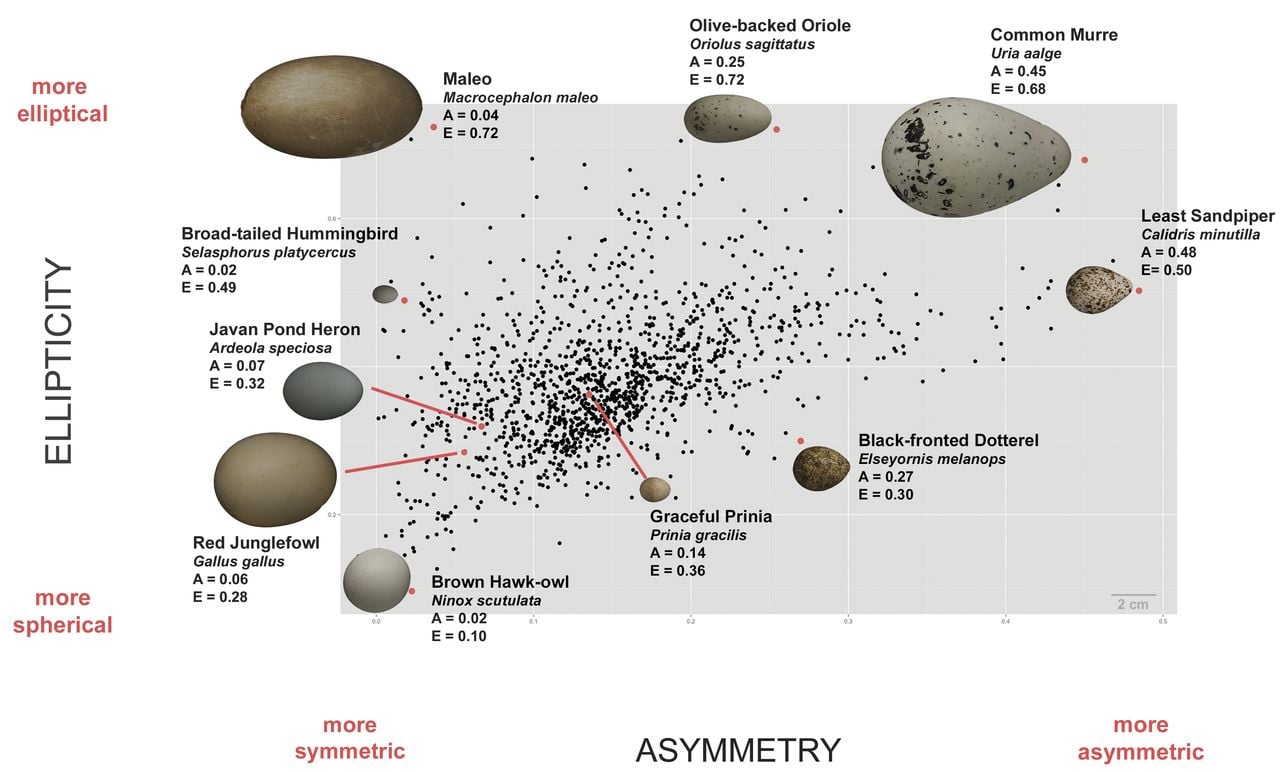Birds lay beautifully vibrant and colorful eggs. For a long time, scientists believed the variations in eggshell appearance resulted from relatively recent evolution in modern birds. However, a new analysis of bird eggshells following a previous study suggests bird eggs may have had a dinosaur origin.
According to a study last year, oviraptors, a dinosaur believed to have lived during the late Cretaceous period, laid blue-green eggs which contained the same pigments found in modern bird eggs. That study raised a question about whether the colors of bird eggs can be traced to a dinosaur origin or if they evolved on their own.
“Here, we’re able to show just another case that a lot of characteristics unique to birds have their roots much deeper in dinosaur history,” Paleontology Division Chair Mark Norell of the American Museum of Natural History told Gizmodo.
Previously, researchers found evidence that oviraptor eggs had the same pigment found in bird eggs. To discover that, they sliced off a piece of a dinosaur egg and placed it through a molecule-identifying mass spectrometer machine. In the new study, two of the researchers who worked on the first paper worked with Norell to analyze more samples. However, they needed to find a new method that wouldn’t jeopardize the fossils.
“The method was the key to the whole paper,” Yale graduate student Jasmina Wiemann told Gizmodo.
The team used samples of 19 eggshells from archosaurs, a group of dinosaurs which includes crocodilians and dinosaurs, both living and extinct. To study the possibility of a dinosaur origin for bird eggs, the team used Raman spectroscopy, which includes shooting samples with lasers and detecting the wavelengths of the light that bounces back against the shell. The colors revealed many kinds of molecules present in the eggs.
Both discovered pigments can be found in today’s birds eggs. They are red-brown protoporphyrin IX and blue-green biliverdin, which also have been found in theropod eggs. Theropods are believed to be direct ancestors of birds, which scientists say also hints at a dinosaur origin for bird eggs.
According to the new study published in Nature, the pigment wasn’t found in crocodilian, sauropod or ornithischian eggs. Wiemann and Norell hypothesized that egg color evolved after theropods stopped laying their eggs underground or inside covered nests. Eggs in an open nest which blended in with the environment had a better chance of survival than stark white eggs.
“The exciting discovery that pigmented eggshells evolved in nonavian theropod dinosaurs will change the way we think about dinosaur nesting and incubation behavior,” Princeton Professor Mary Caswell Stoddard, who wasn’t involved in the study, told Gizmodo. “What were the functions of diverse eggshell colors and patterns? Were they for camouflage? Thermoregulation? Or, as in some parasitic birds, to mimic the appearance of a host’s eggs? These are just a few of the questions behavioral ecologists and paleontologists will be asking in the years to come.”
This is exactly what Wiemann hopes to research next, like which theropods had colored eggs and which didn’t. She also wants to research how bird nests contributed to egg color. However, researchers will need a larger sample of eggshells to study.





